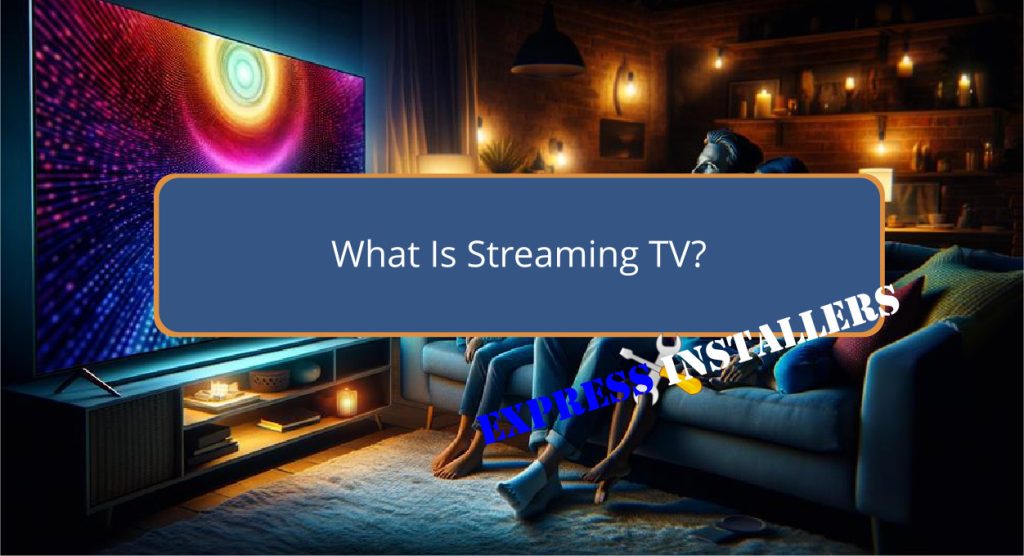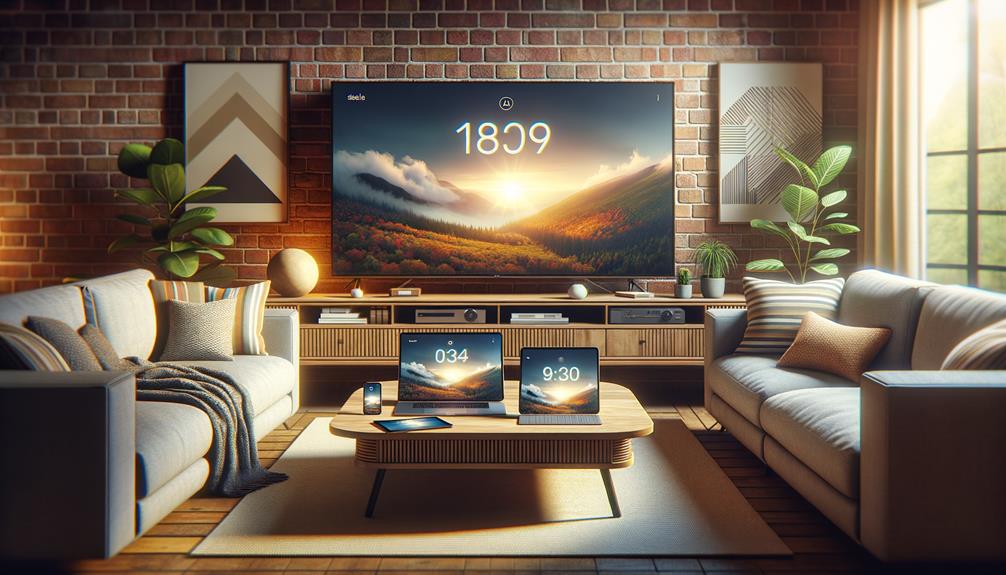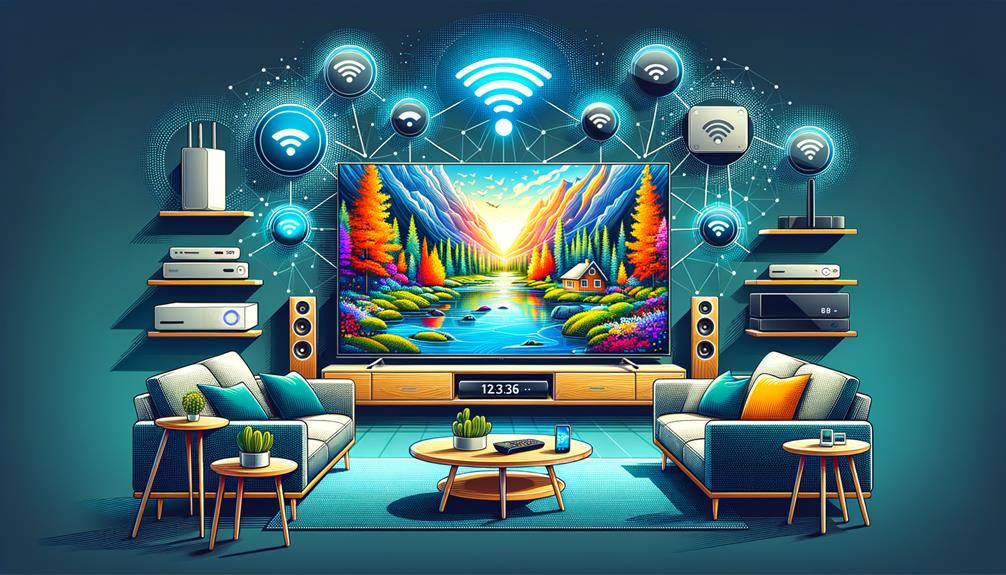
Streaming TV refers to the delivery of television content over the internet, replacing traditional broadcast and cable TV models.
This innovation allows viewers to access a wide array of programming through various platforms on demand.
Users enjoy benefits such as a plethora of viewing options, cost efficiency, and the convenience of watching their favourite shows anytime and anywhere.
The service adapts seamlessly across different devices, including smart TVs, laptops, and mobile devices.
Quality of streaming is maintained through adaptive technology that adjusts based on internet speed.
The expansion into integrating AI and VR for more immersive experiences promises an even richer landscape ahead.
Quick Summary
- Streaming TV uses the internet to deliver on-demand video content directly to users.
- It allows viewers to watch shows and movies without traditional cable or satellite TV.
- Compatible with various devices, including Smart TVs, laptops, and mobile devices.
- Offers personalised content recommendations based on viewers’ watching habits.
- Provides flexibility to watch content anytime and anywhere with internet access.
Understanding Streaming TV
Streaming TV, characterised by its reliance on internet connectivity, has revolutionised the way viewers access television content, offering unprecedented flexibility and a vast array of viewing options.
Analysing the prevalent streaming trends reveals a consistent shift towards personalised viewing experiences, with platforms increasingly using algorithms to recommend content tailored to individual preferences.
This customisation enhances viewer engagement and satisfaction, setting a precedent for how future advancements might further refine content delivery.
Prospective developments in streaming TV could involve more sophisticated AI-driven recommendations, integration with virtual and augmented reality for immersive viewing experiences, and further enhancements in streamlining the user interface to accommodate an even broader audience.
These advancements promise to elevate the viewer experience, making streaming an even more integral part of daily entertainment consumption.
Benefits of Streaming Services
One of the primary advantages of streaming services is the essential flexibility they provide, allowing viewers to select content on demand without adherence to traditional broadcasting schedules.
This flexibility extends to cost savings, as platforms like Now TV enable access to premium channels without long-term contracts.
The variety of content is another significant benefit; for instance, Netflix’s vast library of original shows caters to diverse tastes, while BritBox offers a niche selection of British TV classics and modern series.
Additionally, the convenience of streaming platforms like Amazon Prime Video, which bundles entertainment with other services, enhances user experience by simplifying access and broadening viewing choices, making on-demand viewing a seamless part of everyday life.
Device Compatibility

Given the ubiquity of internet-connected devices, streaming TV services are now readily accessible on a wide array of platforms such as Smart TVs, laptops, and mobile devices, enhancing viewer accessibility and convenience.
A critical device comparison reveals that Smart TVs offer the most integrated experience with built-in apps, whereas external devices like Roku or Chromecast are essential for upgrading non-smart TVs.
This shift underscores the importance of connectivity requirements and platform selection based on the user’s existing hardware.
Each device supports various streaming options, tailored to optimise the user experience. For instance, mobile platforms often feature adaptive streaming quality to accommodate different connectivity speeds.
This ensures a seamless viewing experience across all devices, reflecting a well-orchestrated convergence of technology and user-centric design.
Popular Streaming Platforms
Several leading platforms dominate the streaming TV market, each offering unique content and features to attract diverse audiences.
Netflix, boasting over 90 million subscribers, provides an ad-free experience with a rich variety of high-quality originals.
Its subscription costs reflect the premium content offered, while the user interface is designed for ease, also allowing offline downloads.
Amazon Prime Video, part of the broader Prime subscription, offers an extensive content library, enhancing user value.
Disney+ appeals to family-oriented viewers with its vast collection of Marvel, Star Wars, and Disney classics, also supporting offline viewing.
Hulu and HBO Max cater to diverse tastes with current TV shows, exclusive series, and movies, each platform maintaining competitive subscription pricing and user-friendly interfaces.
Streaming Quality and Technology

Streaming quality, a critical determinant of viewer satisfaction, hinges on multiple technical factors including bandwidth, content delivery methodologies, and adaptive technologies.
Bandwidth requirements are foundational; a minimum of 2 Mbps is essential for basic streaming, escalating to 5 Mbps for HD or 4K content to avoid delays.
The CDN impact is significant, as content delivery networks enhance streaming efficiency by caching content closer to users, thereby reducing buffering and lag.
Moreover, adaptive streaming technology plays a pivotal role by dynamically adjusting the video quality based on the fluctuating internet speeds, ensuring uninterrupted viewing.
Connected TVs, which are increasingly prevalent, benefit immensely from these technologies, optimising the streaming experience and fostering brand loyalty through superior performance.
Choosing the Right Service
When selecting a streaming service, it is essential to carefully assess various factors such as content variety, subscription costs, and user interface to align with individual preferences and budget constraints.
Platforms like Netflix, Amazon Prime Video, and Now TV offer extensive libraries catering to diverse tastes, but their pricing options can vary greatly.
A detailed comparison of these costs against the content provided can guide users to a vital sensible choice.
Additionally, the ease of navigation through the user interface and the quality of customer support are important in enhancing user experience.
Exploring bundle deals or special offers is also advisable as these can provide substantial savings while allowing access to a broader range of content and services.
Frequently Asked Questions
What Is Streaming on TV and How Does It Work?
Streaming on TV involves delivering video content via the internet, allowing on-demand access to a diverse array of shows and movies. It requires compatible devices and works through continuous data transmission for seamless viewing.
Is Streaming TV Free?
Streaming TV can be free through ad-supported content platforms like Pluto TV or Tubi. However, many services operate on subscription models, offering ad-free viewing for a fee, with some providing initial free trials.
Do You Have to Pay for Streaming on TV?
Streaming on TV often requires payment through subscription models or service bundles, providing access to extensive, exclusive content and enhanced viewing experiences without advertisements, though limited free options with ads are also available.
What Is the Difference Between Streaming and Regular TV?
The difference between streaming and regular TV lies in content control and viewing flexibility. Streaming allows on-demand content access, while regular TV follows a fixed schedule with limited viewer control over programming.
Conclusion
To sum up, streaming TV represents a significant evolution in media consumption, characterised by on-demand access and a broad spectrum of content.
The flexibility to choose from various platforms, coupled with compatibility across numerous devices, enhances viewer engagement.
As technology continues to advance, streaming quality improves, offering consumers high-definition experiences.
Decisive factors for selecting an appropriate service include content variety, cost, and the technological robustness of the platform, ensuring that consumer preferences are optimally met.
